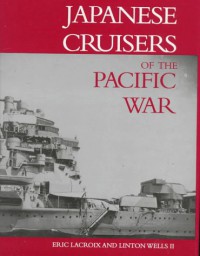Gives the who, what, where, and when -- but not the why

Eric Lacroix and Linton Wells's book is an encyclopedic study in the truest sense of the term. The authors spent a half-century tracking down every detail about the design, construction, and deployment of the cruisers of the Imperial Japanese Navy, which they describe with a generous supplement of photographs, charts, and line drawings. Nor did they confine themselves to just the major classes in service during the war, as they provided chapters covering specialized designs and older vessels that were scrapped even before World War II, an inclusion which better demonstrates to readers the evolution of designs over time. All of this is supplemented with appendices detailing the organization of the IJN, the equipment used aboard the vessels, and the heads of the shipbuilding section. Together they make for a work that is absolute must-reading for anyone interested in these fine warships, the history of the Imperial Japanese Navy, or cruiser design generally.
And yet in spite of all that the authors have done to compile and present this truly impressive body of material, this book can be frustrating for what it leaves out. What Lacriox and Wells have done is given readers all of the who, what, when and where of Japanese cruiser design and construction, but not the underlying reason why these ships were built. Any consideration of the specific purpose envisioned by the design of the ships, the strategic doctrines they were created to fulfill, or even the missions they were sent out to address is absent from its pages. The decision makes the book into a massive, lovingly-crafted technical manual that must be read in conjunction with other works (such as David Evans's and Mark Peattie's Kaigun) to utilize fully the wealth of information between its covers. Perhaps it's an ungrateful assessment considering the sheer amount of labor that went into this book, but in the end the incompleteness of its scope is really more a tragedy than anything else considering how much the authors must have learned about their subject over the course of their decades-long endeavor. To have come up short in this one crucial aspect is nothing less than a missed opportunity have produced a truly definitive work on the subject by the undisputed experts in their field.
 5
5






